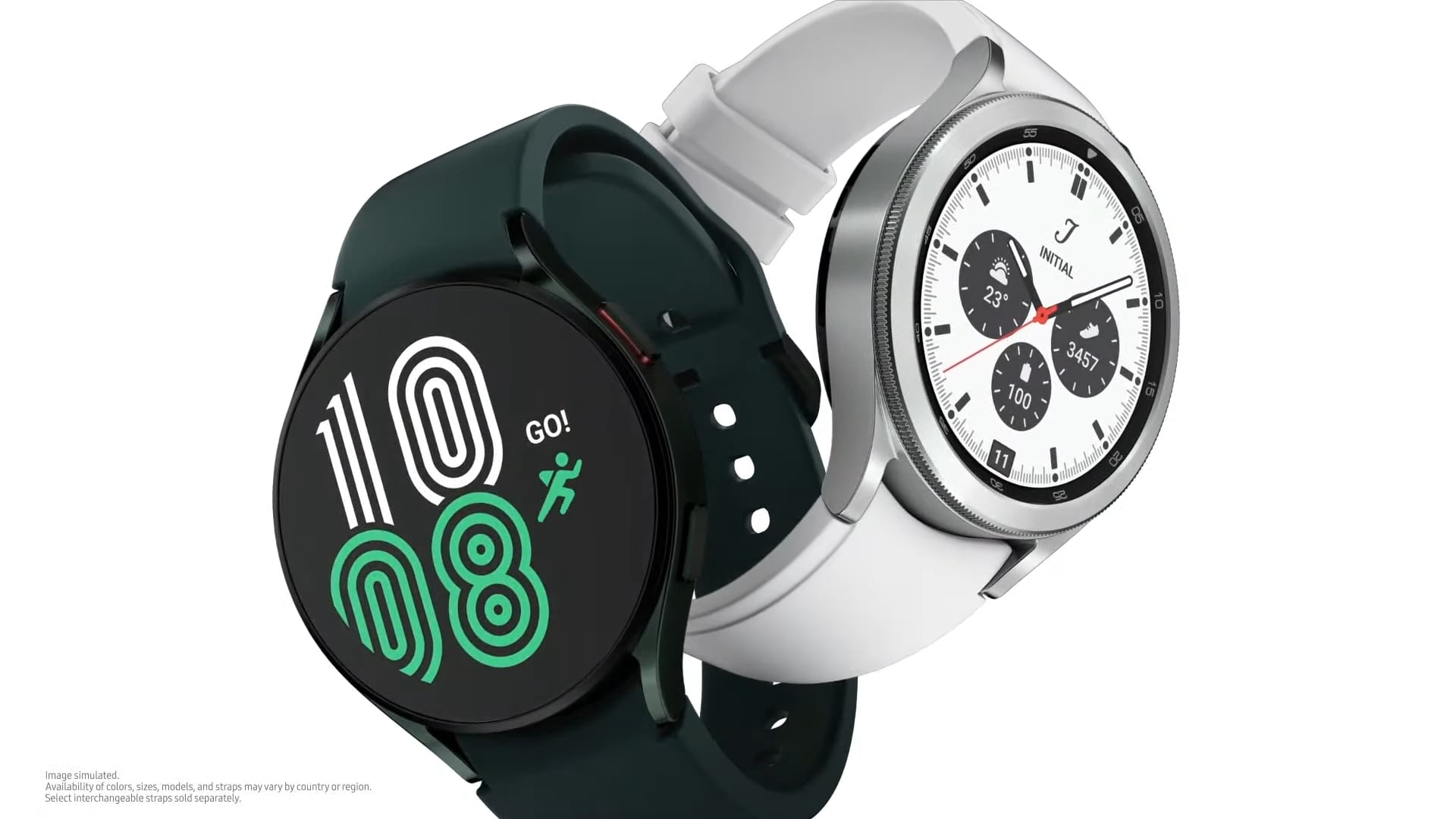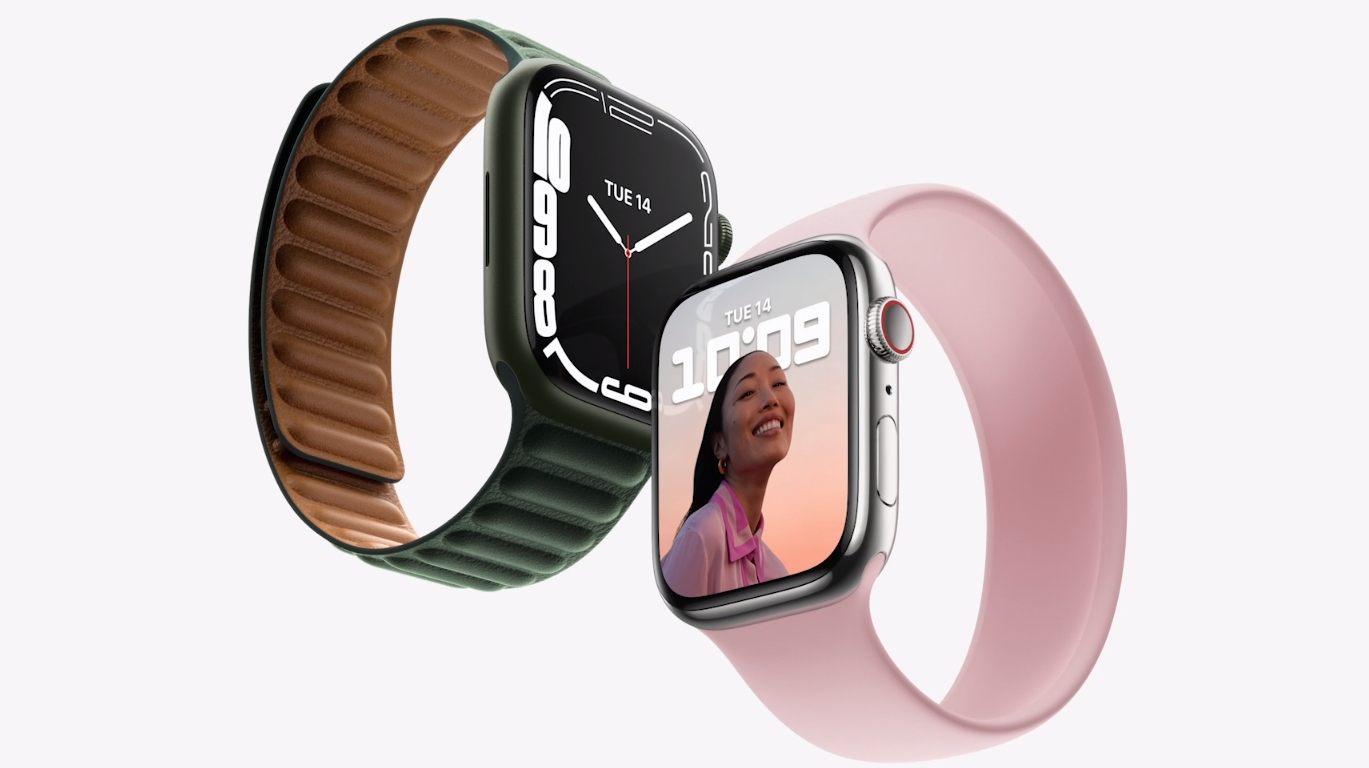Apple Watch 7 vs Samsung Galaxy Watch 4: which is the best smartwatch?

The Apple Watch 7 and the Samsung Galaxy Watch 4 are possibly the two most high- profile smartwatches on the market. They could also be the two best.
They’re also made by two companies who are simultaneously bitter rivals and frequent collaborators. Apple and Samsung have been riffing off one another for years, whether they care to admit it or not.
Basically, when it comes to smartwatch faceoffs, they don’t come any tastier than this one. We even gave both four out of five reviews in 2021, which tells you it’s a close-fought battle.
So which smartwatch is the better of the two, the Apple Watch 7 or the Samsung Galaxy Watch 4? Let’s take a closer look.
Apple Watch 7 vs Samsung Galaxy Watch 4: price and availability

The Apple Watch 7 hit shops on October 15, 2021. Prices start from $399 / £369 / AU$599 for the non-cellular 41mm model, while $429 / £399 / AU$649 will secure you the non-cellular 45mm model.
For the cellular models, the 41mm model will cost you $499 / £469 / AU$749, and the 45mm model costs $529 / £499 / AU$799. You’ll need to factor in the price of a data plan on top of that.
For the Samsung Galaxy Watch 4, it’s available to buy now in the US and UK where it went on sale on August 26, 2021, and September 10 in Australia. There’s also a Samsung Galaxy Watch 4 Classic model that gives you a more premium design with a physical rotating bezel.
Sign up for breaking news, reviews, opinion, top tech deals, and more.
The smaller non-cellular 40mm version of the plain Galaxy Watch 4 costs $250 / £249 / AU$399, while the cellular version costs $300 / £289 / AU$499. The 44mm non-cellular model costs $280 / £269 (about AU$500), while the LTE unit costs $330 / £309 (about AU$580).
Finally, the range-topping Galaxy Watch 4 Classic starts from $349 / £349 / AU$549 for the 42mm Bluetooth model and $399 / £389 / AU$649 for the 42mm LTE model. Stepping up to the 46mm model comes in a Bluetooth version for $379 / £369 / AU$599, or an LTE variant at $429 / £409 / AU$699.
If you can pick up a distinct taste from that model soup, well done. All you really need to know is that the Apple Watch 7 is the more expensive of the two lines, and that the Galaxy Watch 4 gives you more options to suit your particular budget.
Apple Watch 7 vs Samsung Galaxy Watch 4: design & display

Apple and Samsung took fundamentally different approaches to smartwatch design. Apple’s watch is square, while Samsung’s watches are round.
Yes, Samsung has two different iterations of the Galaxy Watch 4. They’re very similar, which is why we’ll refer to them in the singular for much of this feature.
Essentially, the Galaxy Watch 4 is smaller, lighter and has a capacitive touch-sensing band, while the chunkier Galaxy Watch 4 Classic has a physical rotating bezel for navigation. The Apple Watch 7, of course, uses a much more discrete crown that’s used to similar effect.
In terms of sizing, the Apple Watch 7 comes in 41mm and 45mm guises, while the Samsung Galaxy Watch 4 comes in 40mm and 44mm. The Samsung Galaxy Watch 4 Classic is even larger at 42mm and 46mm.
Both Samsung and Apple wearables are dustproof and water-resistant to 50 meters.
When it comes to available colors, the Apple Watch 7 gives you Starlight, Midnight, Blue, Green, and Product Red.
With the Galaxy Watch 4, Samsung split the color options between the two sizes. The 40mm model comes in black, gold and silver, while the 44mm model comes in black, green and silver. All are relatively muted.
It’s tricky to compare the displays of these two devices given that one is square and one is circular, but we’ll try. The Apple Watch 7’s 1.9-inch screen is 20% larger than its predecessor, and is also larger than the Galaxy Watch 4’s 1.4-inch equivalent.
They’re similarly pixel-dense, though, at 326ppi for the Apple Watch and around 330ppi for the Galaxy Watch 4. Both are punchy AMOLEDs, and are two of the clearest smartwatch displays on the market.
Another difference is that the Apple Watch 7’s display curves off at the edges, while the Galaxy Watch 4’s is much flatter and more utilitarian.
Apple Watch 7 vs Samsung Galaxy Watch 4: fitness & features

With its tougher body, the Apple Watch 7 is better equipped for fitness usage than previous models. Despite this, it’s still somewhat lacking in a few key areas.
It still lacks things like interval sessions and heart rate alerts, for example. What it does provide is a blood oxygen sensor, an electrical heart sensor, a third-generation optical heart sensor, GPS, and a barometric altimeter. Its GPS and heart rate monitoring accuracy is up there with some decent dedicated trackers.
The Apple Watch 7’s electrocardiogram (ECG) and blood oxygen (SPO2) monitoring facility isn’t medical-grade, however, and thus isn’t of particular value.
The Samsung Galaxy Watch 4 sports a new three-in–one BioActive Sensor that enables the watch to monitor heart rate, blood oxygen levels and body composition. The latter is done using a unique bioelectrical impedance sensor (BIA), and it lets you monitor things like skeletal muscle mass and body fat percentage.
It’s this body composition tracking feature that sets the Galaxy Watch 4 apart from the Apple Watch 4 on the health tracking front.
Meanwhile, the Apple Watch 7’s ace card here is Apple Fitness+. Apple’s trainer-based workouts have been expensively assembled, and give it a clear fitness edge over its rival if you need a little extra motivation to stick to a fitness routine.
We found the Galaxy Watch 4’s GPS tracking capabilities to be similarly on point to the Apple Watch 7’s.
It’s worth pointing out that the fitness facilities of both of these smartwatches only really work to their full potential when you also own a smartphone by the same manufacturer. We’re accustomed to Apple’s walled garden approach, but the Galaxy Watch 4 similarly cordons off its ECG and blood pressure monitoring facilities for Samsung smartphones.
Apple Watch 7 vs Samsung Galaxy Watch 4: OS, power and battery

Apple fitted the Apple Watch 7 with an S7 chip, which is an ostensibly new custom processor. However, it’s actually the S6 chip from the Apple Watch 6 with a slightly different design.
We’d love to gripe about this somewhat deceptive move more, but the truth is that the Apple Watch 7 is plenty smooth enough. You don’t get any of the jank that you frequently do in lesser smartwatches.
Of course, the Samsung Galaxy Watch 4 is not one of those lesser smartwatches. It too uses custom silicon in the form of the Samsung Exynos W920, and we found it to be one of the smoothest and most responsive wearables we’ve ever used.
One way in which the Apple Watch clearly wins is onboard storage. At 32GB, it has double the capacity of the Galaxy Watch 4, giving you much more headroom for apps and offline music.
Both of these watches have seriously strong software, at least compared to other smartwatches. Apple’s WatchOS 8 is probably the best smartwatch OS out there, but Samsung has supplied a strong rival. It ditched its own Tizen OS and returned to Google’s WearOS, albeit with its own distinctly Tizen-like UI.
Both are a joy to use, with finely honed interfaces and richly populated app stores. If you’re a fan of typing full messages from your watch, meanwhile then both watches will provide the facility with full keyboard functions.
When it comes to stamina, the Apple Watch 7 regularly got us through a full 24 hours on a single charge. The Samsung Galaxy Watch 4 went even better, with two to three full days between charges depending on the frequency and intensity of your fitness regime.
We should note that this relates to the 44mm model of the Watch 4, with its larger 361mAh battery. We haven’t yet tested the stamina of the 40mm model, so it may not fare quite as well. The Apple Watch 7 has a 309mAh cell, but direct capacity comparisons don’t mean all that much given that they use completely different operating systems.
Takeaway

The Apple Watch 7 packs a wide variety of impressive features, and provides a superb second screen for iPhone users. It’s not much of an upgrade over the Apple Watch 6, but it’s the best smartwatch for iOS users nonetheless.
The Samsung Galaxy Watch 4 is a more impressive upgrade over its own predecessor, with a superior Wear OS-based operating system and excellent battery life.
Both watches provide solid fitness features and silky performance, as well as comfortable fits. The Apple Watch 4 has the more premium design, but you’ll have to pay a little extra for the privilege. Really, they’re very close when you stack up the pros and cons.
It sounds obvious, but what it really comes down to is this: if you have an iPhone, the Apple Watch 7 is the better smartwatch. If you have a Samsung phone, the Galaxy Watch 4 is better.
Both have compatibility issues with non-branded phones, though the Galaxy Watch 4 comes out stronger in terms of Android smartphone operability. For that reason it’s safe to call the Galaxy Watch 4 the better pick for most people, even if the Apple Watch 7 is arguably the better smartwatch with all things being equal.
- iPhone 13 vs iPhone 12: which is best for you?

Jon is a freelance journalist who has been covering tech since the dawn of the smartphone era. Besides TechRadar, his words and pictures have appeared in The Telegraph, ShortList, Tech Advisor, Trusted Reviews, Expert Reviews, and more. He largely covers consumer technology, with a particular focus on smartphones and tablets. However, he's also been known to dabble in the worlds of entertainment and video games.